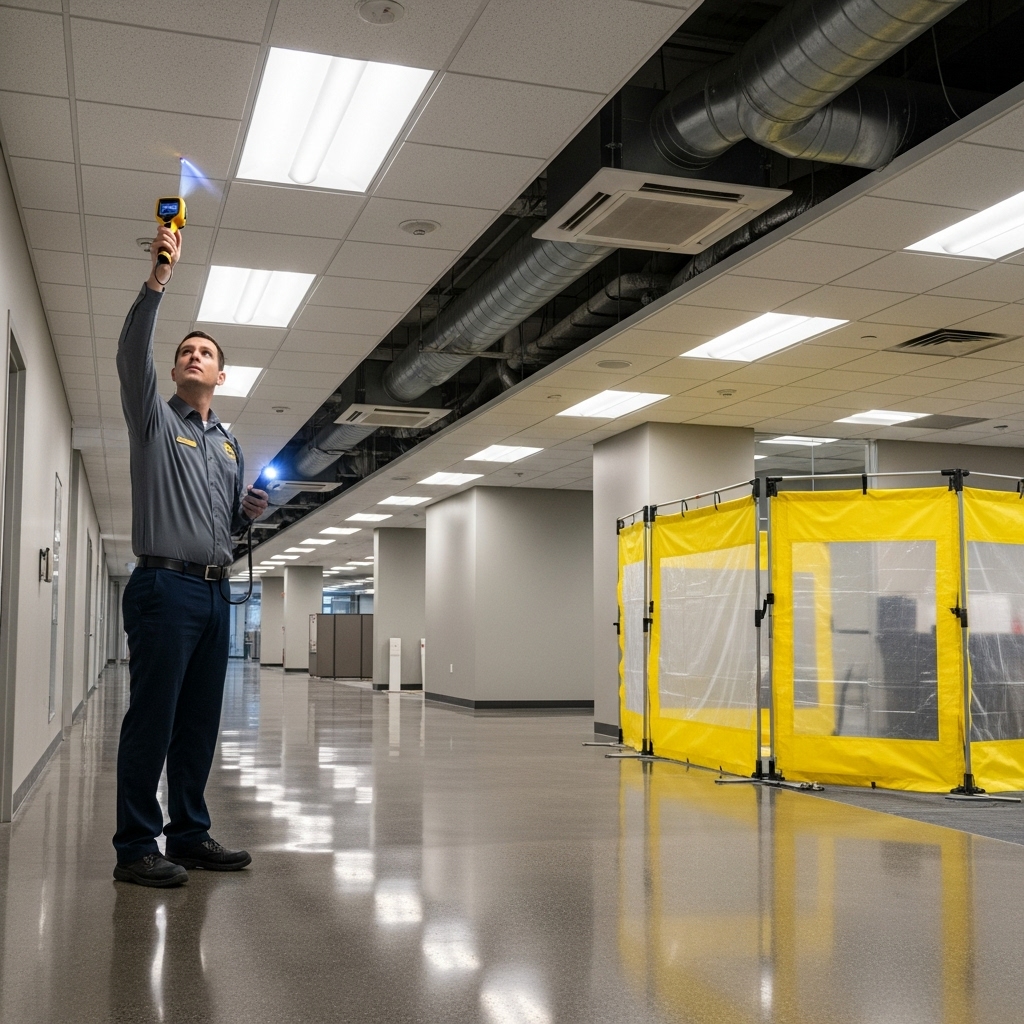Commercial buildings in Bloomfield serve a wide range of purposes—from retail storefronts and restaurants to offices, schools, and light industrial spaces. Each occupancy type brings distinct moisture loads and operational demands, making a one-size-fits-all approach to mold evaluation ineffective. A focused overview of mold inspection services for commercial properties explains how to manage risk proactively, protect occupants and inventory, and keep the business running smoothly when moisture challenges arise.
Because mold is fundamentally a moisture problem, commercial inspections emphasize both the building envelope and the mechanical systems that handle ventilation and conditioning. In multi-tenant environments, inspection plans may need to coordinate access across suites, monitor shared systems, and prioritize recommendations that minimize downtime. The goal is to document conditions clearly, identify root causes, and outline steps that align with operational realities.
Why commercial properties face unique mold risks
Commercial facilities often operate for long hours, use high-moisture processes, or host many occupants. Restaurants add steam and grease to indoor air, gyms introduce perspiration and shower humidity, and offices may have complex HVAC zoning. Older brick buildings can store moisture in masonry, while flat roofs and parapets are prone to leaks. Seasonal temperature swings in North Jersey further stress building materials and sealants, creating pathways for water intrusion that must be discovered and addressed quickly.
Key components of a commercial mold inspection
- Stakeholder interview: Understand workflows, maintenance history, and any occupant complaints.
- Exterior envelope review: Examine roofing, flashing, masonry joints, and drainage systems for vulnerabilities.
- Interior survey: Inspect restrooms, kitchens, mechanical rooms, storage areas, and tenant suites for visible mold and moisture indicators.
- Moisture diagnostics: Use meters and infrared cameras to locate hidden dampness in walls, ceilings, and floors.
- Mechanical assessment: Evaluate air handlers, economizers, outside air intakes, filters, and condensate management.
- Sampling plan: Collect air or surface samples when needed to support decision-making or post-remediation verification.
- Risk prioritization: Organize findings by impact on operations, occupant health, and building integrity.
- Documentation: Provide a report with photos, measurements, and step-by-step recommendations that fit business timelines.
In a commercial context, sequencing matters. Interim controls—such as targeted containment, humidity management, or temporary relocation of sensitive inventory—can protect operations while long-term fixes are executed.
Coordination across tenants and teams
Multi-tenant buildings require clear communication. Inspectors may coordinate with property managers, facility teams, and tenant representatives to schedule access, share findings, and align corrective actions. This collaboration ensures that shared systems like rooftops, risers, and common corridors are addressed alongside suite-specific issues, reducing the risk of recurring problems.
Mid-guide reminder for busy teams
When schedules are tight, it helps to streamline decisions. Professional mold inspection services deliver prioritized guidance so you can control moisture, correct issues, and keep your Bloomfield operation moving without unnecessary disruption.
High-impact prevention strategies for businesses
- Roof management: Maintain roofs proactively; repair flashing and ponding areas before leaks develop.
- Drainage and site grading: Direct water away from the building and protect low-lying entrances and loading docks.
- Ventilation and makeup air: Ensure fans and outside air systems are balanced to manage humidity and odors.
- Condensate control: Keep lines clear, slopes correct, and pans clean; install float switches to avoid overflows.
- Process controls: For restaurants, gyms, and salons, capture and exhaust moisture at the source.
- Housekeeping: Keep storage organized and off floors to improve airflow and inspection access.
- Monitoring: Track indoor humidity and temperature in sensitive zones like server rooms and archives.
With consistent maintenance and monitoring, many commercial mold risks can be prevented or limited before they affect operations. The inspection report should tie recommendations to the specific ways your building is used.
Understanding testing in a commercial setting
Testing has particular value in workplaces and public venues where documentation must be shared with stakeholders. Air sampling can help determine whether observed conditions affect occupied areas, while surface sampling can verify that discoloration is microbial in nature. After remediation, clearance sampling confirms that conditions have returned to normal ranges. The key is to use testing strategically, in tandem with visual findings and moisture data.
Reporting that supports decision-making
Business decisions depend on concise information. Look for reports that summarize risks, communicate urgency, and provide options with operational considerations such as work-hour scheduling and containment needs. Diagrams, photographs, and a clear action plan help facility teams coordinate repairs and preventative measures efficiently.
Frequently asked questions
Q: Will an inspection disrupt business operations? A: Inspections are designed to be minimally disruptive. When access or noise is a concern, scheduling can be adjusted to off-hours, and sampling setups are compact.
Q: How do we handle sensitive areas like kitchens or server rooms? A: Inspectors coordinate with managers to maintain hygiene and uptime, using protective measures and timing that respect operational constraints.
Q: Do we need testing if mold is visible? A: Not always. Testing is most useful for documenting conditions, assessing unaffected areas, or validating remediation outcomes.
Q: Can we continue operations during remediation? A: Often yes, with containment, air filtration, and scheduling strategies that isolate work zones. Your report should outline options.
Q: How can we prevent recurrence? A: Address roof and envelope issues, maintain HVAC systems, and implement humidity monitoring. Ongoing housekeeping and inspections reduce risk.
Q: What about tenant responsibilities? A: Clear communication and documentation help define responsibilities for moisture control and access, reducing confusion and delays.
Q: How fast can we get results? A: Visual findings are immediate; lab results follow after analysis. Reports typically arrive promptly to support decision timelines.
Keep your Bloomfield facility safe and productive
Protect your people, assets, and reputation by scheduling professional mold inspection services for your commercial property. A focused evaluation pinpoints moisture sources, documents findings, and delivers a prioritized plan that keeps operations on track.

